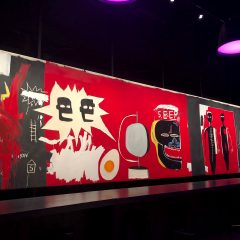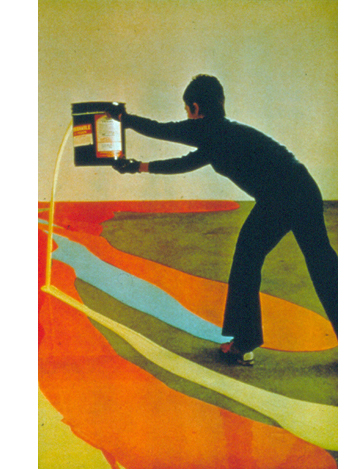
Lynda Benglis produced a series of work, beginning in 1968, that upset contemporary notions of what was acceptable as high art: forms that appeared soft and oozing when art was supposed to be rigid and geometric; polychrome and even fluorescent when the prevailing color was gray; sparkle-y when such effects were associated with ballroom dancing and parade costumes.
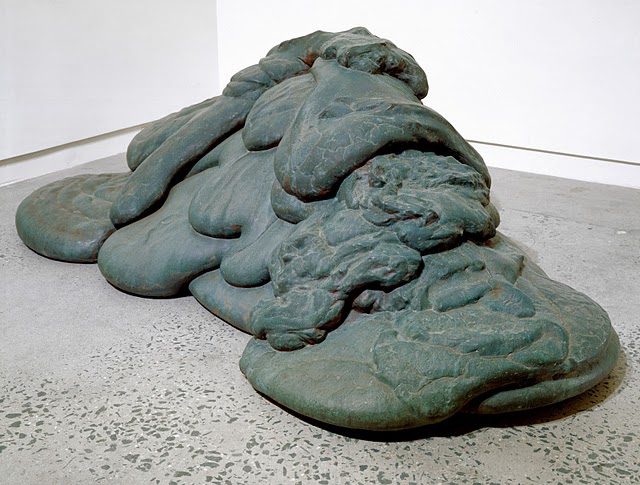
She was a young woman in a field that was overwhelmingly male and she was impossible to ignore. She had balls and that upset the art world, nowhere more so than in a famous piece sited in purchased pages of Artforum – a photo of the nude Benglis brandishing a large dildo – in which she mocked the macho art world, the straight-jacketed sexuality of early feminism and the unexamined links between art and commerce.
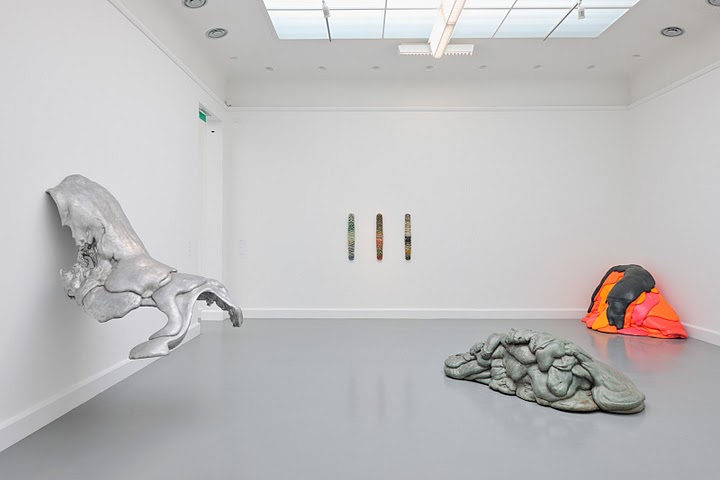
The discomfort with her work can be measured by the fact that her last survey exhibition was organized by the High Museum of Art in 1991 and her current retrospective is organized by the Irish Museum of Modern Art (IMMA; it opened in Eindhoven in June and will travel to Dijon, Providence, R.I., and finally to the New Museum, New York in February, 2011). Where have the major New York City museums been all this time?
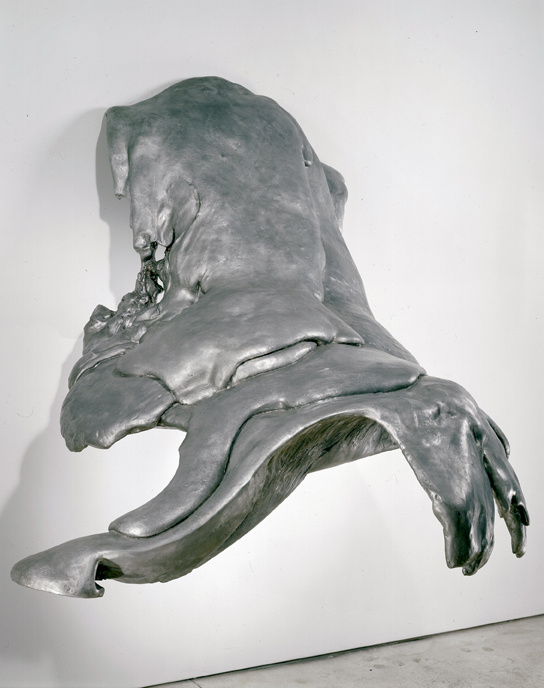
It hasn’t helped that Benglis never developed a signature style. The first pieces she exhibited, the Floor Paintings, would seem the perfect embodiment of Donald Judd’s 1965 comment that Much of the best new work in the last few years has been neither painting nor sculpture. Usually it has been related, closely or distantly, to one or the other. Her flows of colored latex running across the floor read as skeins of Pollock’s enamel paint excerpted and given singular prominence. Her lava-like accretions of polyurethane foam piled on the floor or cantilevering from walls conformed to many of the current injunctions in sculpture: no referent, no base, no traditional materials or handling (carving, casting welding). But why do they stand so far from the work around them?
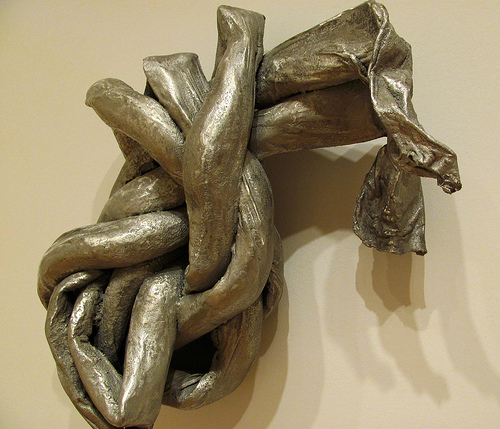
Benglis’ work shares some of the anarchic use of pliable materials with Eva Hesse; her organic forms reveal a soft, wet, sticky, androgynous sexuality of desire and pleasure rather than power, which was the acceptable sexual mode of her male contemporaries. She made wall pieces (neither painting nor sculpture) using the ancient medium of encaustic but they weren’t painted, rather built up with colored wax. The exhibition also includes work in formed plastic, cast metal, pendant forms constructed like Noguchi’s Akari (paper lamps), wall reliefs formed over chicken wire and cast plastic objects; but the biggest revelation for many will be her videos. Benglis understood that video empowered the artist to work on both sides of the camera, and from 1973 to 1976 she created videos which explored the language of the medium in a manner akin to what Hollis Frampton was doing at the same time. They deconstruct porn films, home movies and slapstick as well as photography and video itself.
The 455-page catalog (Linda Benglis, Dijon, Les presses du réel) reproduces an even broader range of Benglis’ work than is shown in the exhibition and includes six essays, a conversation with the artist, short appreciations by other artists, legible reproductions of page layouts of several notable early articles and letters to the editor (some published) reacting to Benglis’ Artforum centerfold. Peter Plagens’ wonderfully tongue-in-cheek letter is juxtaposed to the offended, self-righteous letter from the magazine’s junior editors. It includes the usual back matter (exhibitions and bibliography) but would have been easier to use with numbered illustrations and an index. I’m sorry to say that the quality of the illustrations is not what they should be; I don’t know whether the fault is with the photography or the printer. This lessens the appeal of this overdue and important publication.
Philippe Parreno
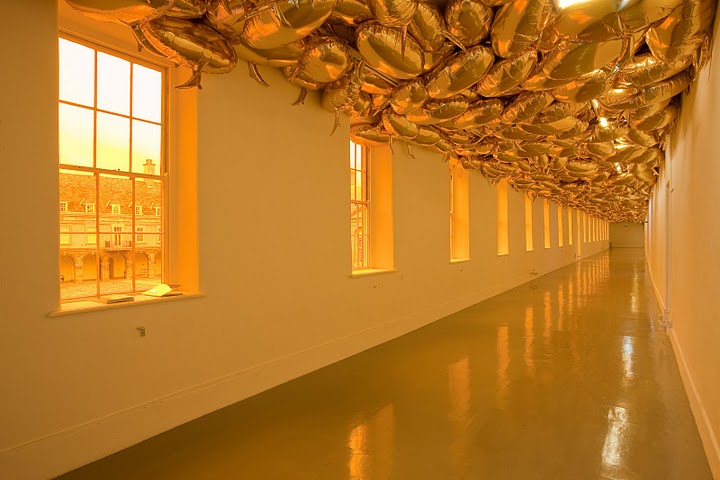
A variation on the exhibition of Philippe Parreno, organized by the Centre Pompidou, was also on view at IMMA; the artist re-conceives the exhibition for each location and while he said he considered IMMA’s space – a seventeenth-century military hospital and one of the finest buildings in Ireland – I couldn’t see evidence of it in the results. Parreno employed work that previously had been part of other exhibitions; he considers the exhibitions themselves as artworks although the parts are individually titled and sold. The artist and curators assumed considerable prior understanding of his work, so for the uninitiated it read like an article missing the footnotes.
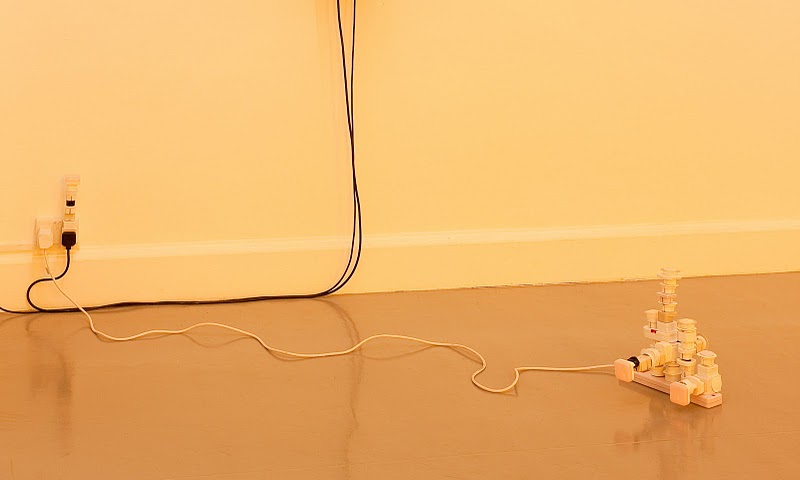
My favorite parts were thematically modest and needed no background. You entered via a long and very wide hall, the ceiling of which was filled with golden balloons shaped as thought balloons (think Peanuts cartoons). They were visually delightful, as balloons always are, and their metallic glimmer added an element of surprise. For long-time visitors to IMMA they inevitably recalled an Andy Warhol exhibition in the same wing of the museum; its first room displayed Silver Clouds (1966, silver pillows animated by fans) that Warhol used as stage props for Merce Cunningham.
Another favorite element, the numerous AC/DC Snakes, revealed themselves slowly as artworks rather than electrical hardware. Parreno played with the bulky, European plug adapters, using them more or less as Leggo, to create constructions that were mostly attached to wall outlets. Many had low-level lights (night lights?) as finials. I just might re-create my own homage to Parreno and his playful attention to everyday objects that are so common as to be invisible.
Another modest but thought-provoking element was the single-page handout which contained the artist’s responses to questions about the exhibition. Visitors were told that after reading it they might want to slip it into the catalog. And sure enough, the sheet with one irregular border looking as if it had been torn from its binding was numbered page 259-260; the catalog ended at page 258. I loved the idea that a book might expand; that printing and binding are not final acts of definition or limitation. Parreno’s smallest statements have some of the longest echos.


